Plant Biosystems Design Research Roadmap 1.0
- PMID: 37849899
- PMCID: PMC10521729
- DOI: 10.34133/2020/8051764
Plant Biosystems Design Research Roadmap 1.0
Abstract
Human life intimately depends on plants for food, biomaterials, health, energy, and a sustainable environment. Various plants have been genetically improved mostly through breeding, along with limited modification via genetic engineering, yet they are still not able to meet the ever-increasing needs, in terms of both quantity and quality, resulting from the rapid increase in world population and expected standards of living. A step change that may address these challenges would be to expand the potential of plants using biosystems design approaches. This represents a shift in plant science research from relatively simple trial-and-error approaches to innovative strategies based on predictive models of biological systems. Plant biosystems design seeks to accelerate plant genetic improvement using genome editing and genetic circuit engineering or create novel plant systems through de novo synthesis of plant genomes. From this perspective, we present a comprehensive roadmap of plant biosystems design covering theories, principles, and technical methods, along with potential applications in basic and applied plant biology research. We highlight current challenges, future opportunities, and research priorities, along with a framework for international collaboration, towards rapid advancement of this emerging interdisciplinary area of research. Finally, we discuss the importance of social responsibility in utilizing plant biosystems design and suggest strategies for improving public perception, trust, and acceptance.
Copyright © 2020 Xiaohan Yang et al.
Conflict of interest statement
The authors declare that they have no conflicts of interest regarding the publication of this article.
Figures

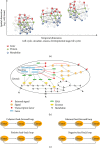


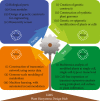

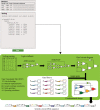
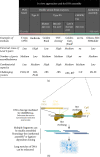

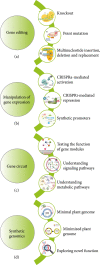


References
-
- Knapp S., “People and plants: the unbreakable bond,” Plants, People, Planet, vol. 1, no. 1, pp. 20–26, 2019
-
- Hiscock S. J., Wilkin P., Lennon S., and Young B., “Plants matter: introducing plants, people, planet,” Plants, People, Planet, vol. 1, no. 1, pp. 2–4, 2019
-
- Chen H.-Z., and Liu Z.-H., “Steam explosion and its combinatorial pretreatment refining technology of plant biomass to bio-based products,” Biotechnology Journal, vol. 10, no. 6, pp. 866–885, 2015 - PubMed
-
- Austin A. T., and Zanne A. E., “Whether in life or in death: fresh perspectives on how plants affect biogeochemical cycling,” Journal of Ecology, vol. 103, no. 6, pp. 1367–1371, 2015
-
- Dusenge M. E., Duarte A. G., and Way D. A., “Plant carbon metabolism and climate change: elevated CO2 and temperature impacts on photosynthesis, photorespiration and respiration,” New Phytologist, vol. 221, no. 1, pp. 32–49, 2019 - PubMed

